Longtime Bike Auckland supporter Richard Ashurst has been keeping an eye on changes in Singapore’s bike culture over the last few years, and shares his observations with us…
Every few years, I join my partner in visiting her family back in Singapore. It’s is an interesting little country, and after several visits I’m starting to notice how it’s changing over time, particularly with regards to bikes – which, although still a tiny share of the transport system, have doubled in mode share over the last three years.
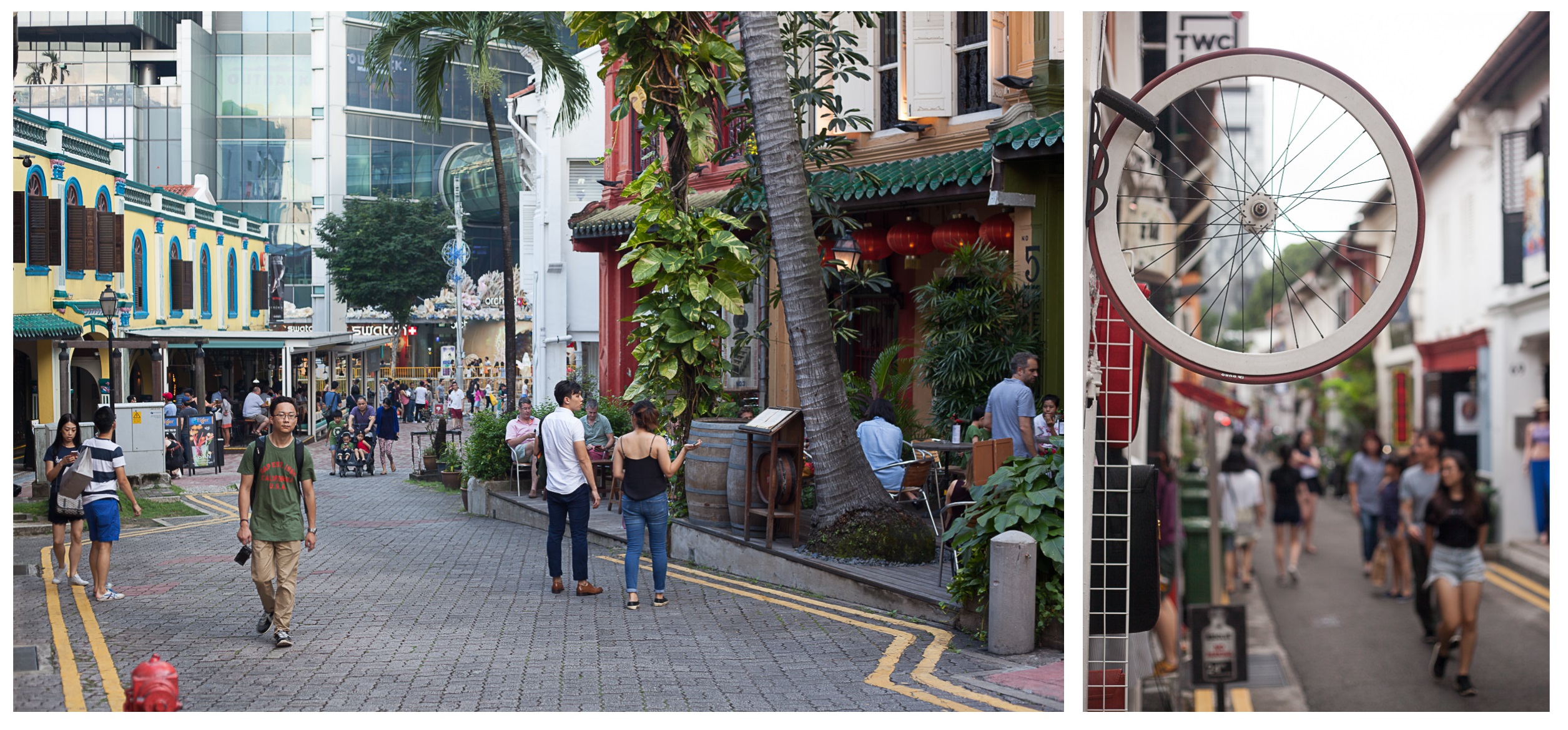
Like New Zealand, Singapore has a history as a British colony, so they drive on the left side of the road and the country speaks English (or sometimes ‘Singlish’). That’s about where the similarities end, however: Singapore fits roughly the population ofNew Zealand into a much smaller space, and the country is a city state which carefully manages itself with public policies and master plans, helped by a compliant population that’s generally willing to go along with all the bright ideas.

In terms of transport, Singapore could be considered an expensive place to drive. It’s known for its road pricing, a hot topic for Auckland right now. On our visit to Universal Studios, the Donkey character in the Shrek live show joked that ERP (Electronic Road Pricing) stood for Everyday Robbing People. Everyone laughed, but no one complained, because just about everyone had taken the train there.
Putting a price on congestion doesn’t end with ERP though. To own a car, you have to buy a Certificate of Entitlement from the government. These expire, are limited by a quota system, and are priced by auction. Ouch. This can bounce the price of buying a modest family car up to the price of a supercar in New Zealand.
If that sounds anti-car – well, it kind of is. It’s designed to reduce the demand for road space, and was introduced after simpler systems had failed to address congestion adequately. The policy doesn’t live in isolation, however, with public transport having had decades of investment. Singapore’s MRT (Mass Rapid Transit) system is world class, rapid, frequent, and constantly being expanded. Even catching a taxi in Singapore is surprisingly cheap.
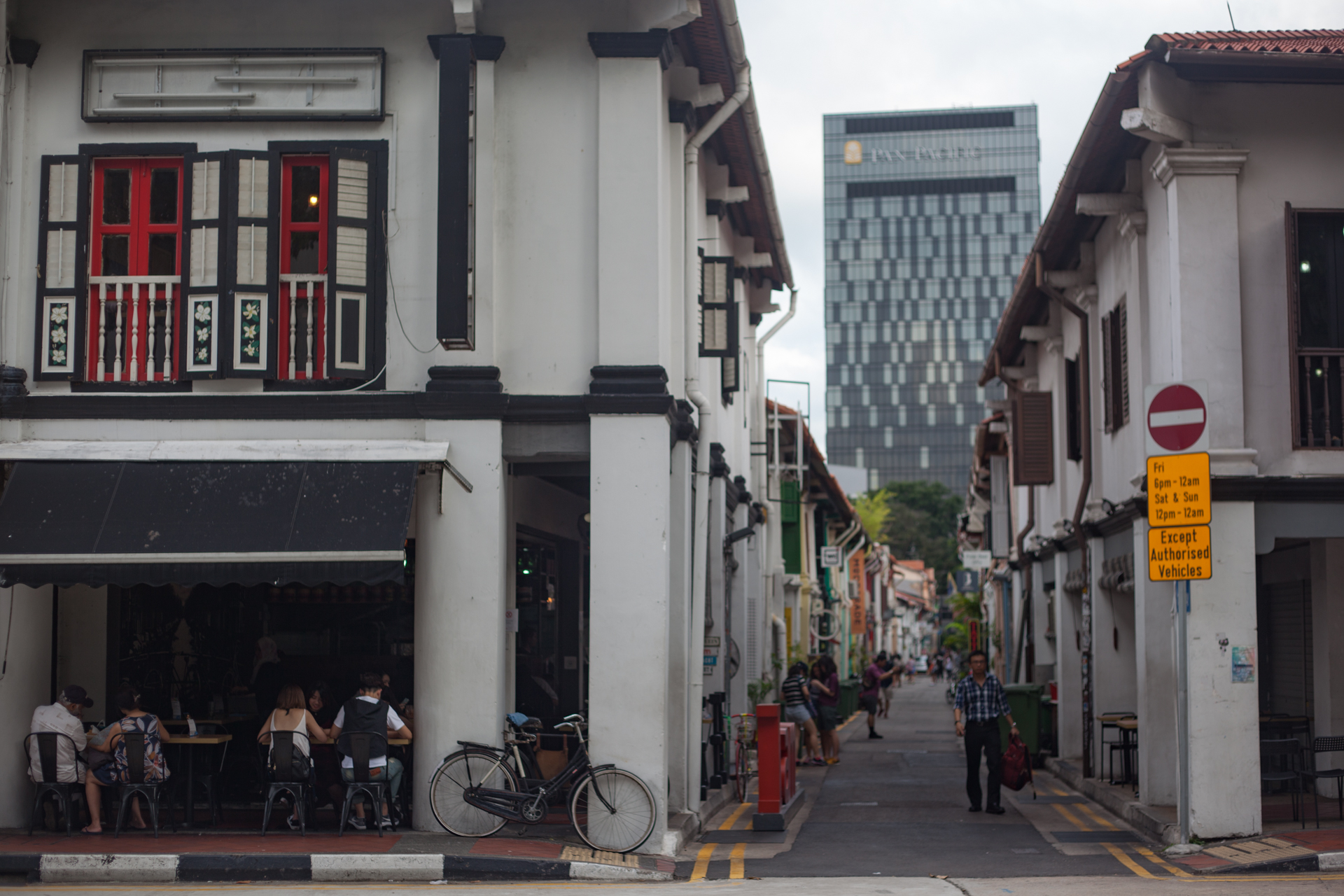
It’s so easy to just walk for a few minutes, then catch a bus or train to just about anywhere. And Singapore is really hot – so I was surprised to hear that cycling was seeing a big increase. I’d always seen rusty old bikes chained up under buildings, but rarely seen them in use.
Why are people moving to bikes? Well, public transport in Singapore during peak hours is a victim of its own success. The volume of people being moved during peak flows is something to behold. At a recently redeveloped train station, a connection between two lines has been improved so that patrons now alight off a train at an elevated platform, walk over the platform and get the train on the next line. The trains for both lines arrive every few minutes – so off-peak, it’s similar to getting off an elevator to catch another one.
Even with these improvements, though, peak times see a huge queue, so you can’t immediately get onto the next departing train – although I realise the disappointment of a 6-minute wait doesn’t hold much weight in Auckland.
Could it be that bikes are acting as a pressure release valve for a public transport system under strain? During my recent visit, the news ran a story about how the government was supporting the recent boost in bike popularity. To be honest, the report didn’t entirely fill me with confidence, mentioning tired safety tips like wearing fluoro, while showing people on bikes balancing perilously close to heavy machinery. Good luck with that!
Interestingly, though, in practice I saw very little fluoro and a lot of quaxing.
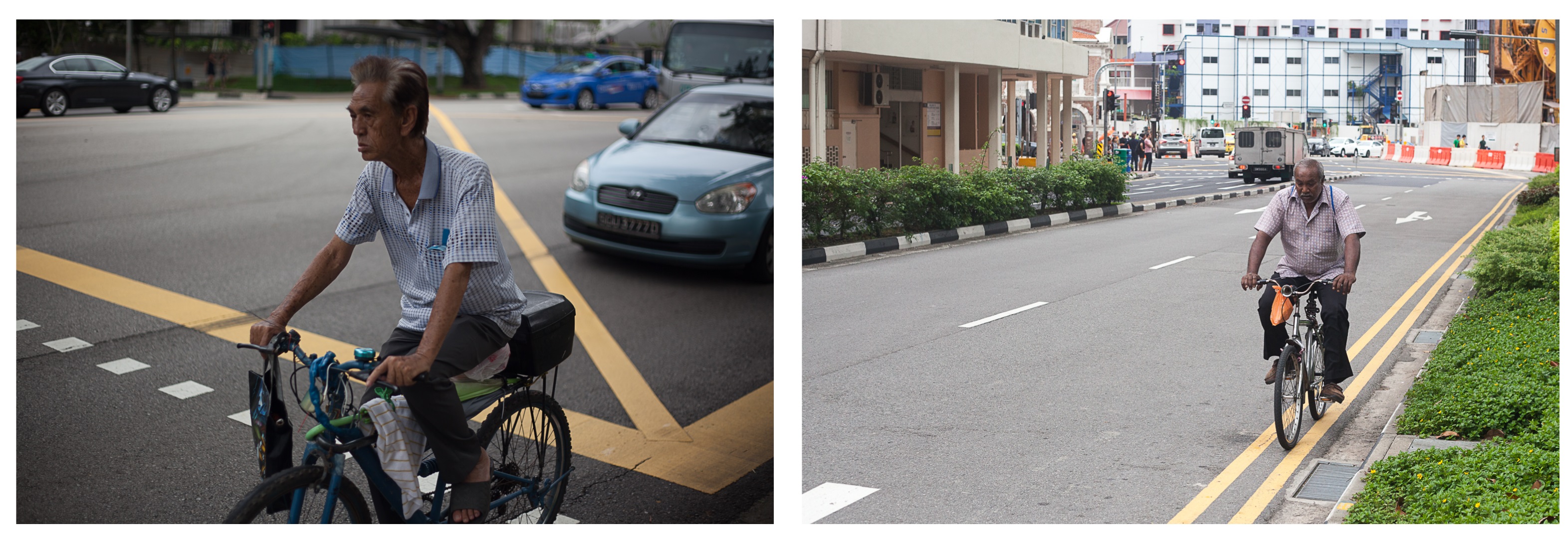
Absolutely no on-road cycle lanes exist in Singapore, as far as I can tell, which in itself sends a pretty clear message. (Incidentally, the bus lanes look like a confusing mess also). Still, one key initiative Singapore has created to support cycling is the PCN (Parks Connector Network), a series of cycle paths linking the city’s parks into a coherent series of bike routes around the city. I’m generally of the opinion that roads are for transport, and street space should be made for cycling. On that level, the PCN seems aimed at providing recreational routes, not utility everyday cycling.
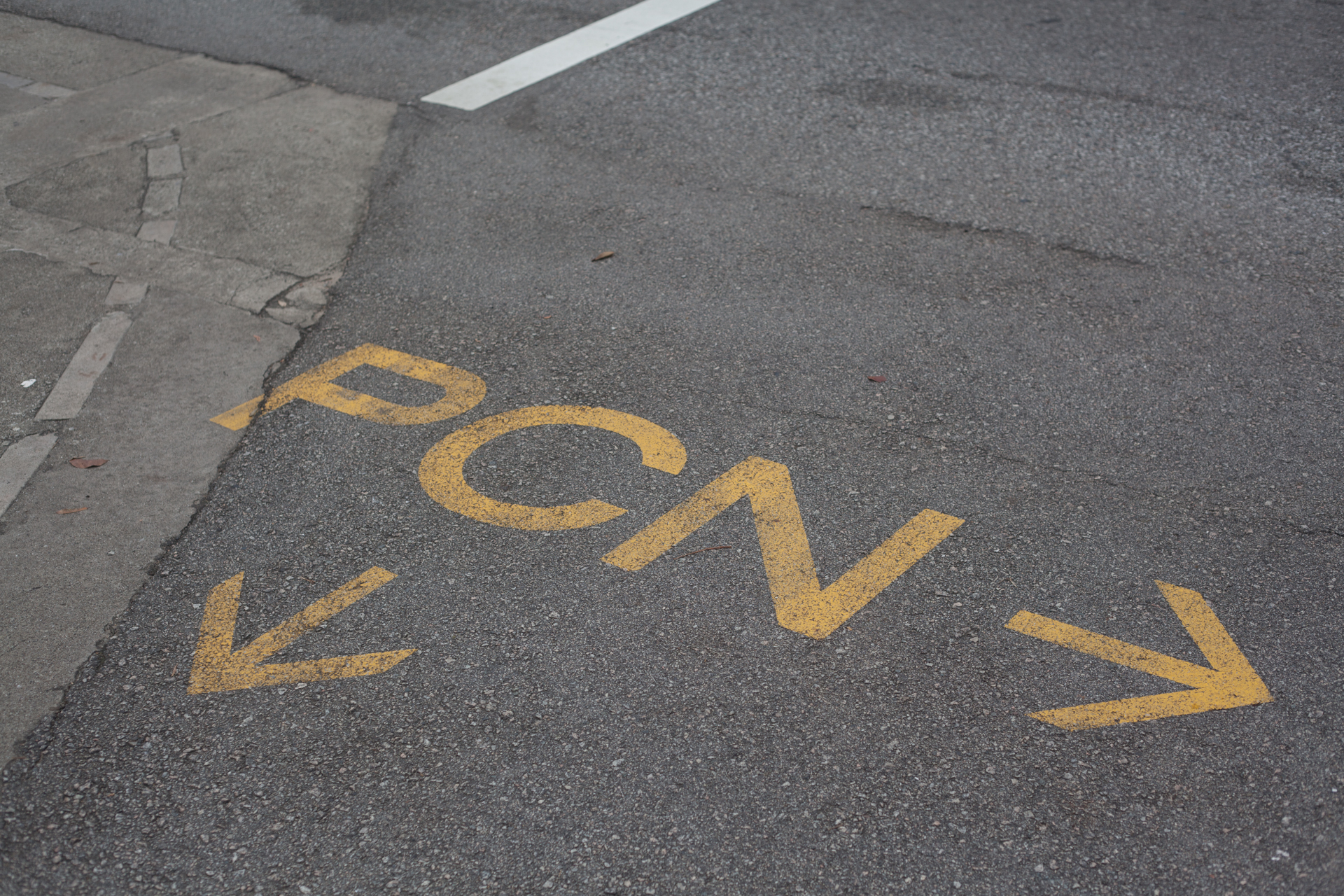
Singapore has definitely embraced the pedestrian, and urban developments are based around car-free centres, so perhaps it’s no surprise that most of the cycling I saw seems to run with the concept of the ‘wheeled pedestrian.’ Normal people on bikes in normal clothes slowly winding their way around the local markets or to and from transit stations. It might be illegal – and Singaporeans are really quite good at living within the law – but put them on a bicycle and they’ll happily flout the footpath cycling rules at low speed on a bike laden with shopping bags, with no one batting an eye.
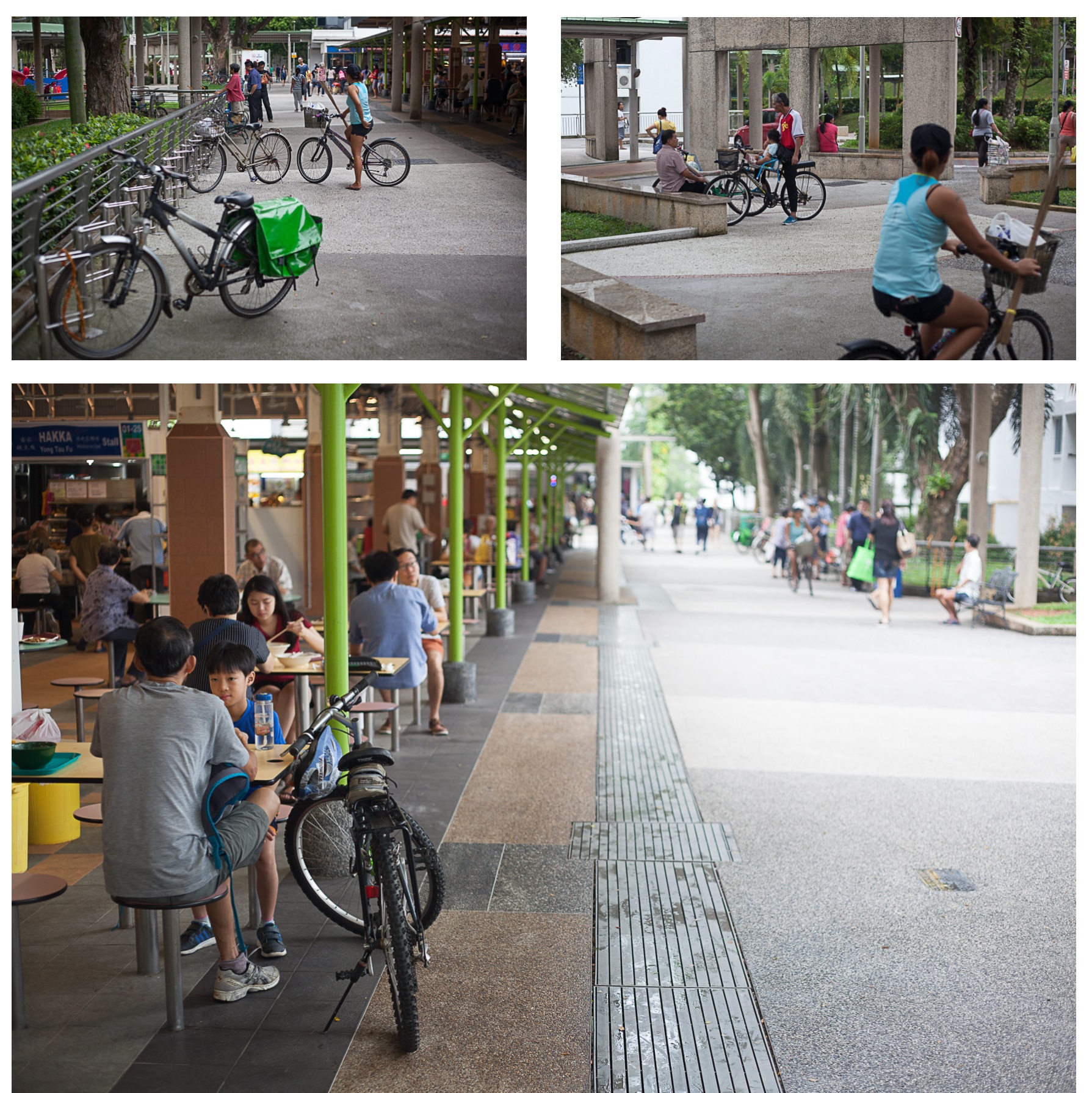
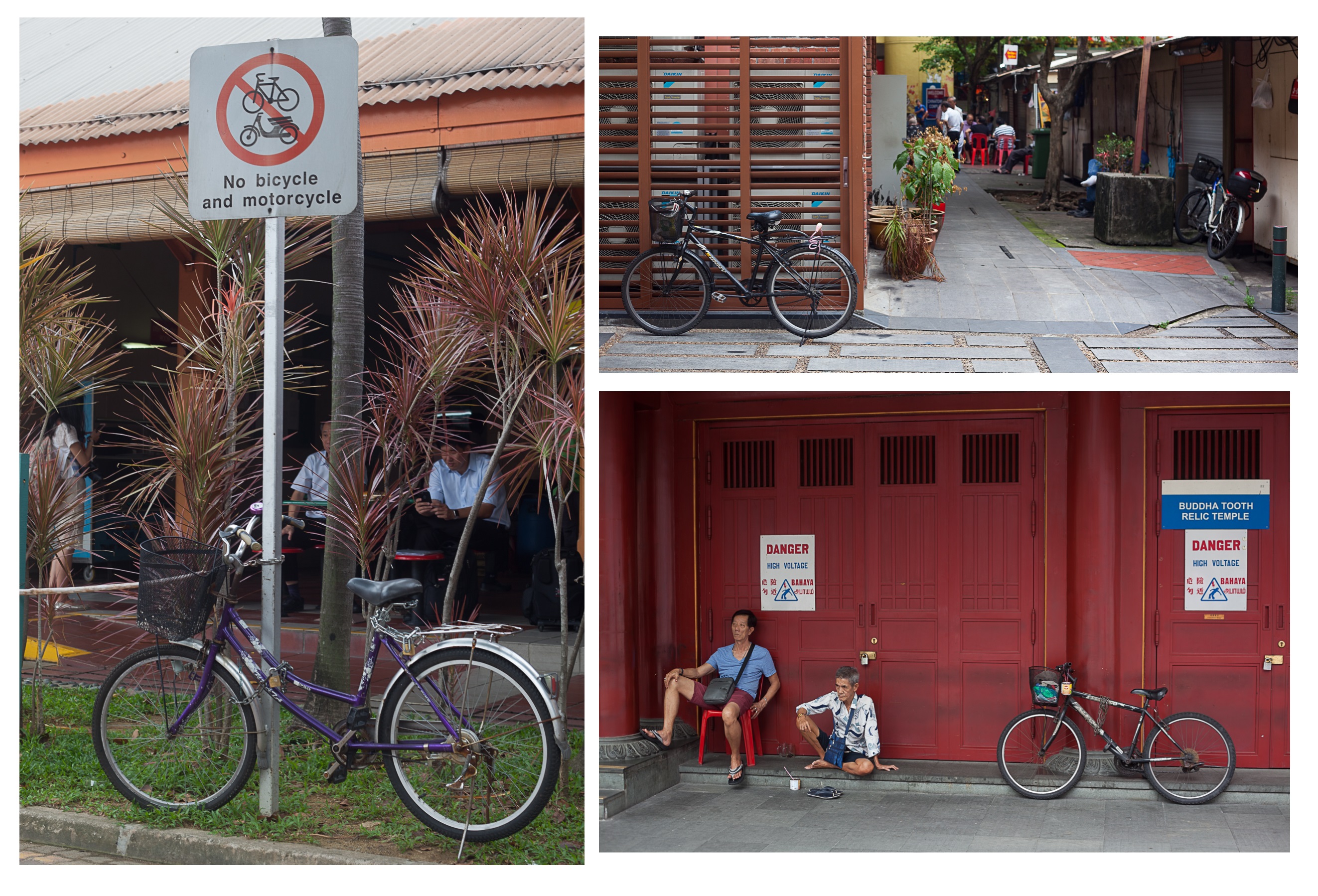
To experience the network first hand we hired bikes and checked out part of the PCN, in East Coast Park. This park is built on land which was reclaimed and later converted into a coastal park. I discovered immediately why riding a bike might be preferable to walking – it has built-in air conditioning! Everyone rides slowly, and at low speed you are treated to a wonderful little breeze, whilst not actually putting in more effort than walking.
The park sees heavy usage from all types even though very few people seem interested in going for a swim with the parking lot of container ships located just off-shore. Here’s what the park looks like:
 You’d be forgiven for thinking cars are allowed here. They aren’t. The path width puts almost all our routes to shame.
You’d be forgiven for thinking cars are allowed here. They aren’t. The path width puts almost all our routes to shame.
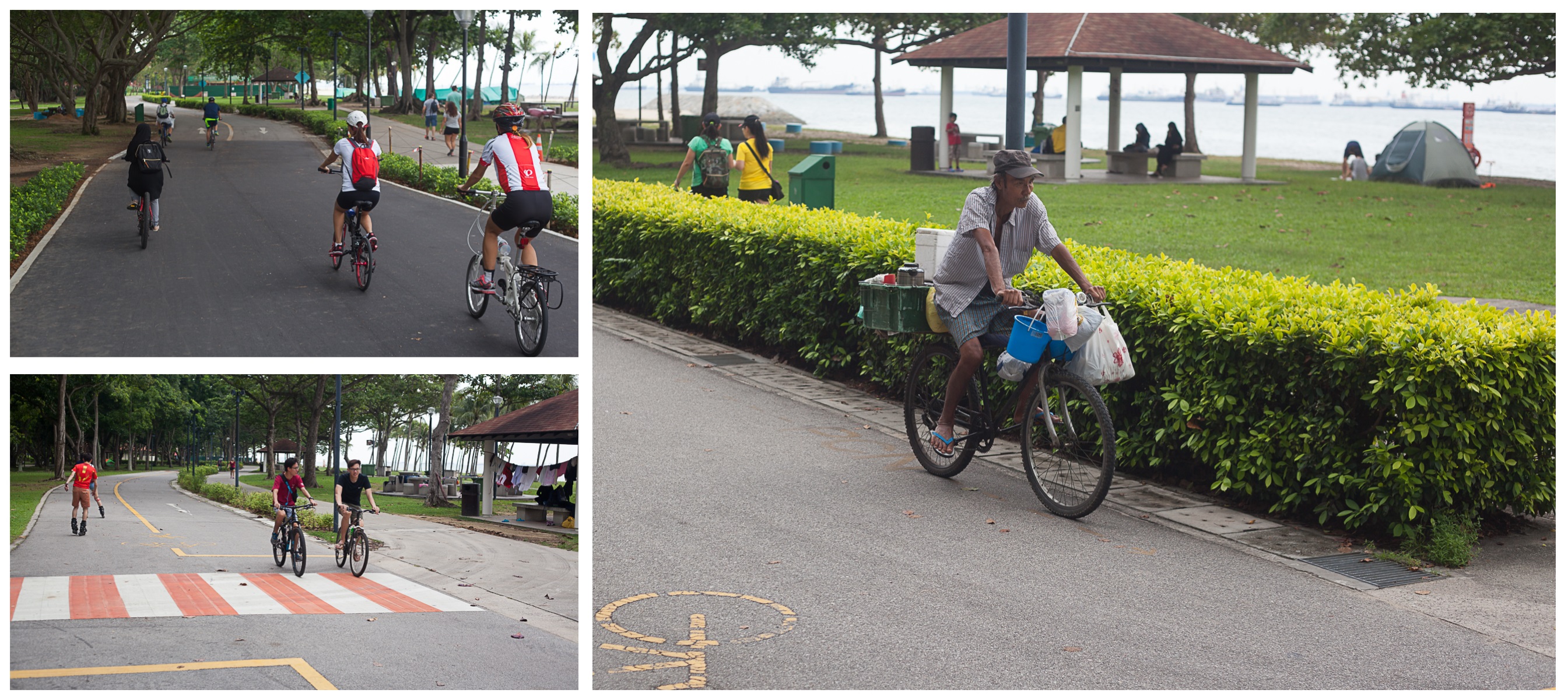
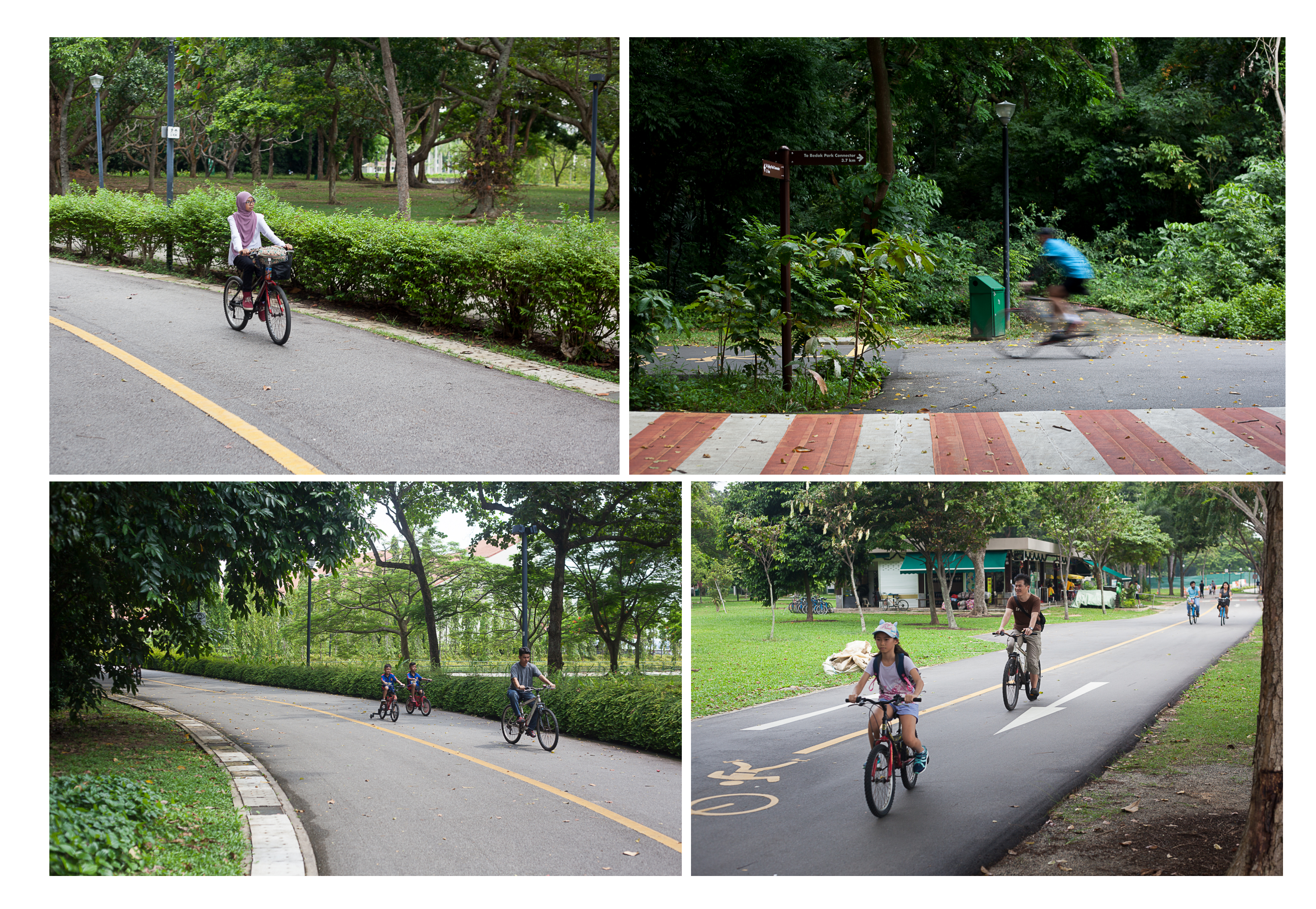
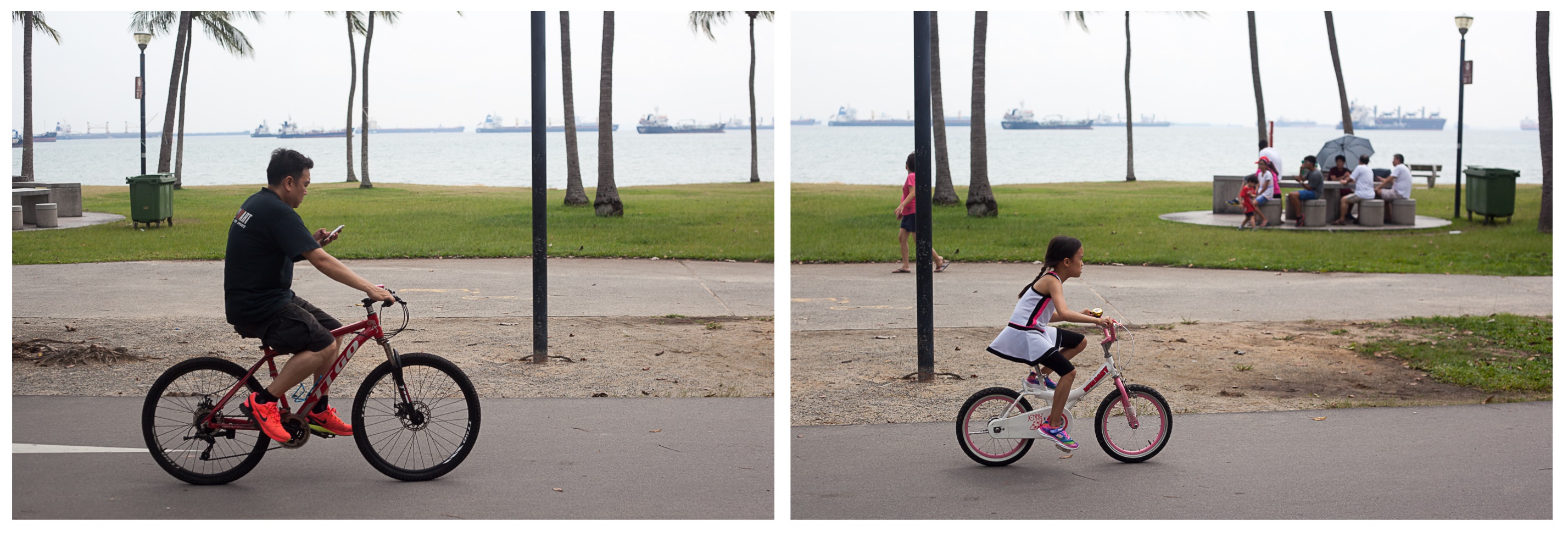
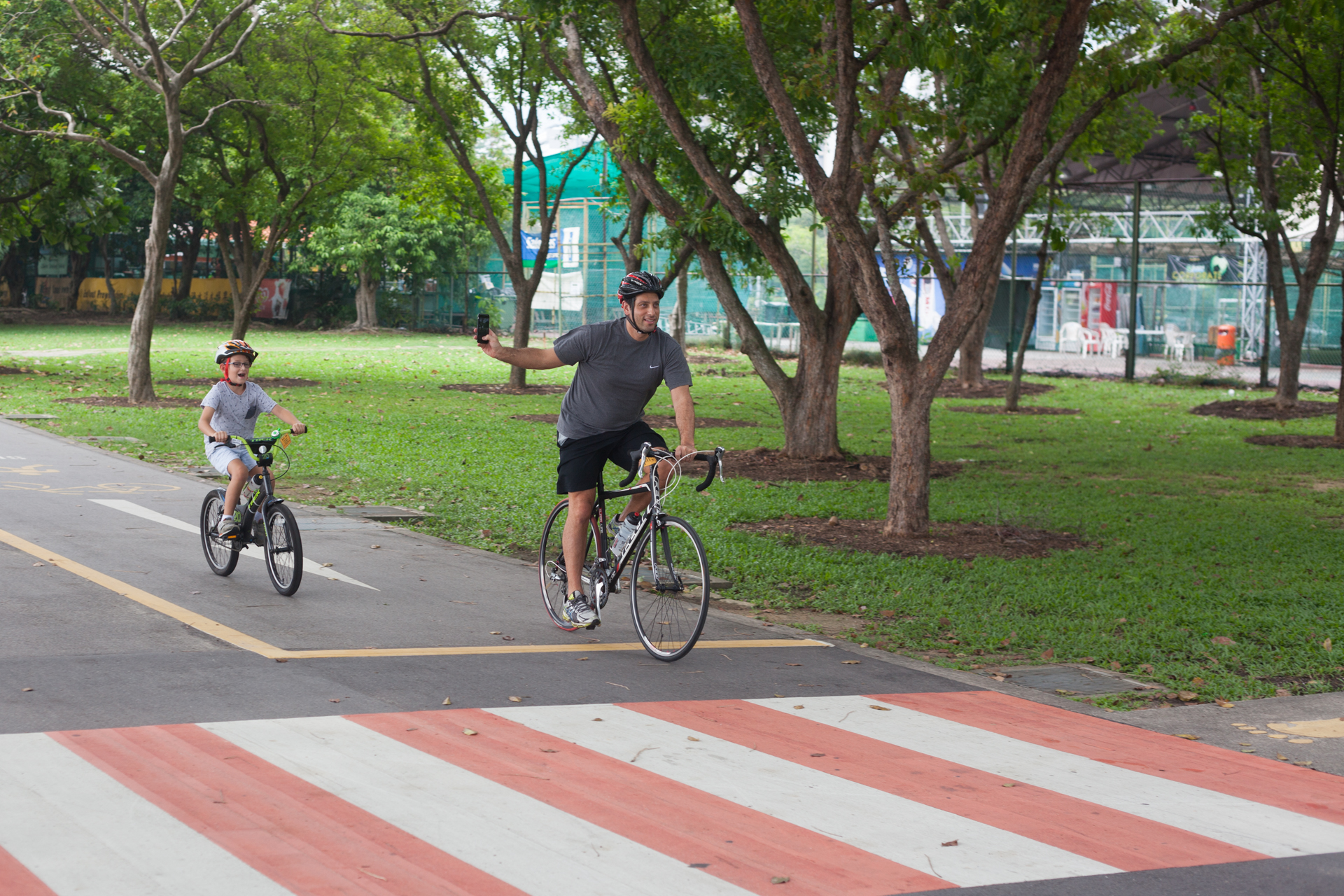
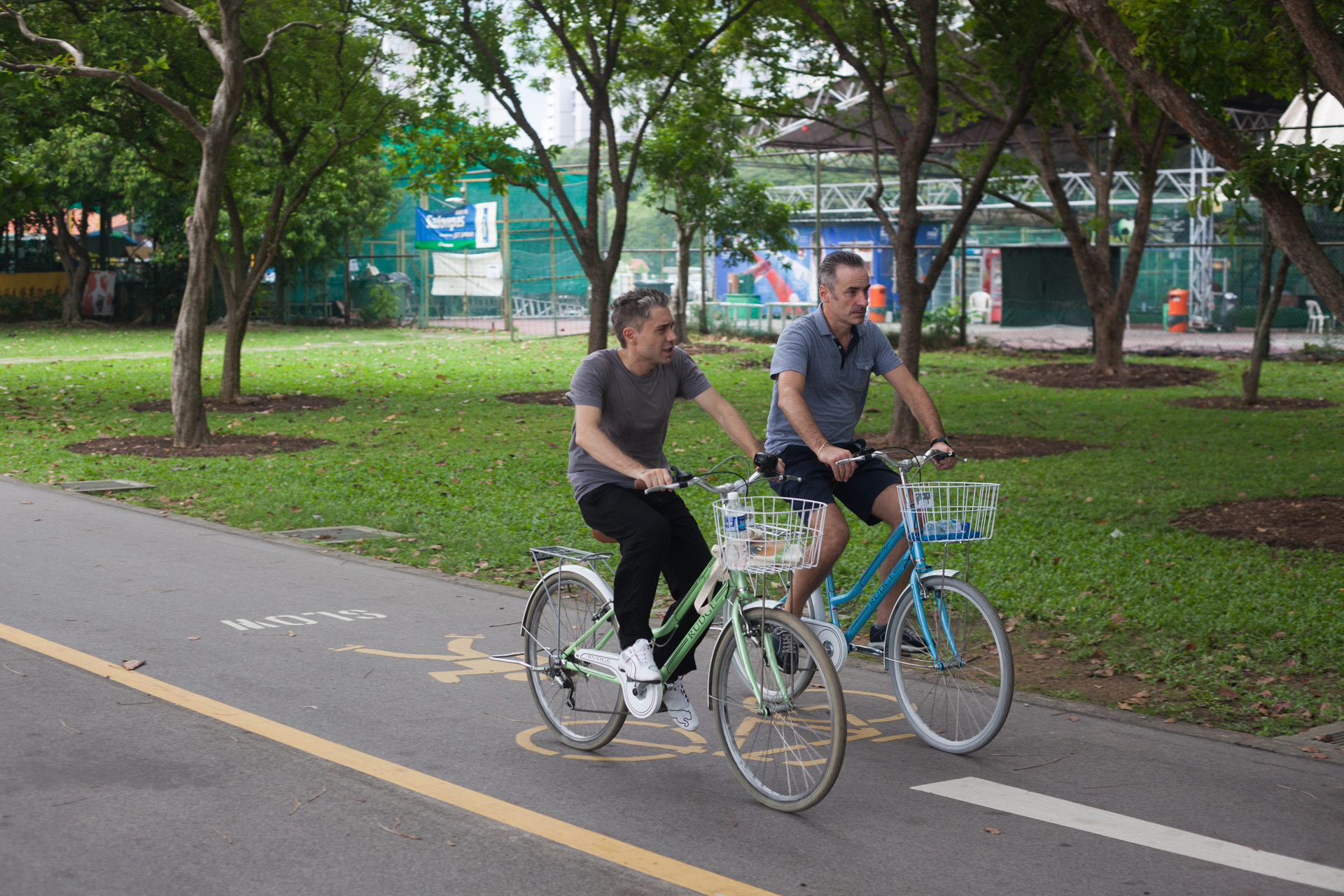
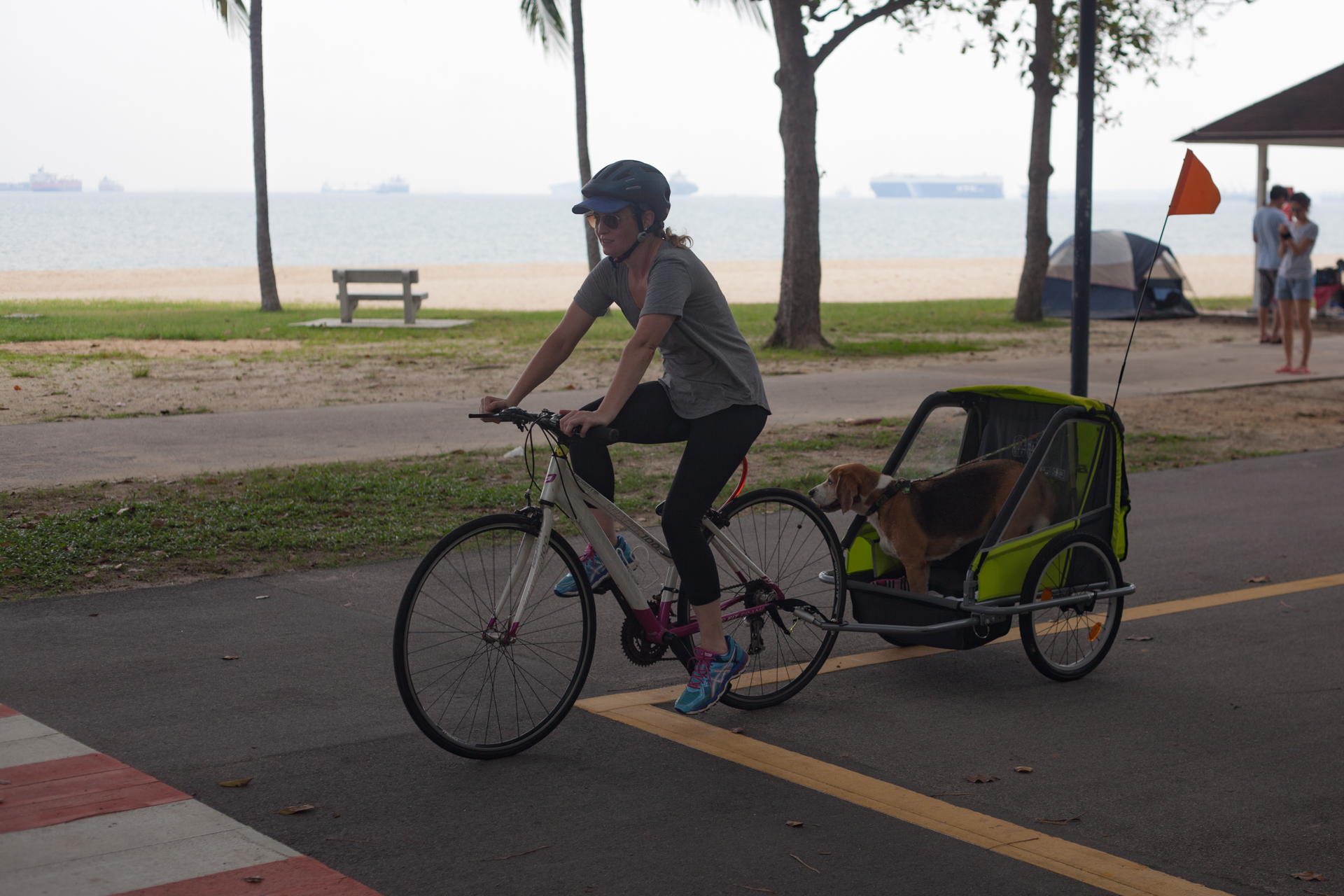
The PCN doesn’t seem to be finished yet, but as it expands it will give people the ability to explore and connect routes into an alternative arterial network. I should note that most of the network isn’t of the quality seen above. It generally follows paths alongside rivers and drains. And looks more like this:
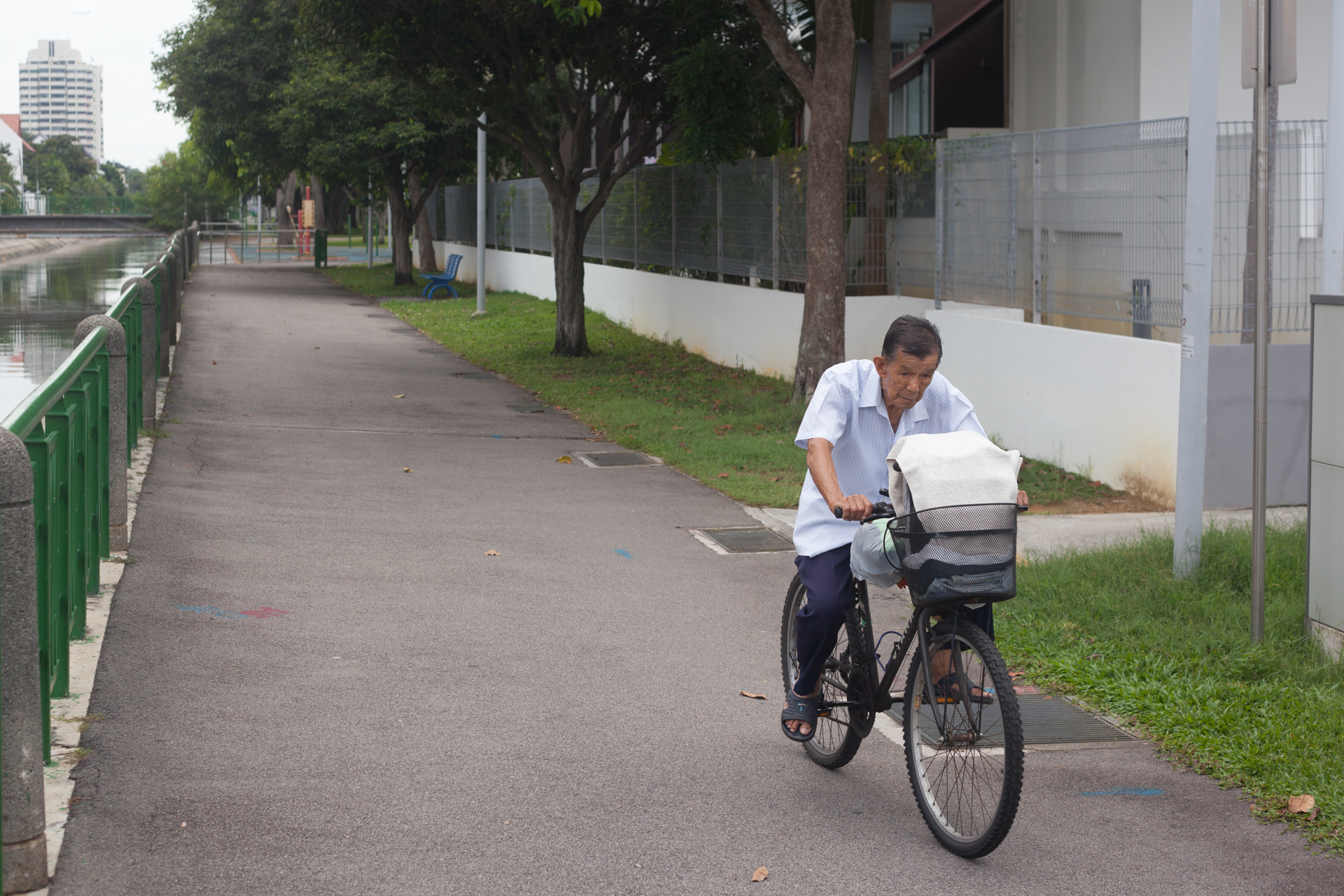
Bike parking is everywhere. Walk Cycle Ride, the equivalent of our Walking and Cycling team at Auckland Transport, has ads downtown aiming to normalise cycling and show the convenience of connecting to transit. It’s an interesting juxtaposition of the ‘freedom to come and go’ under the watchful eye of a Singaporean ‘big brother.’
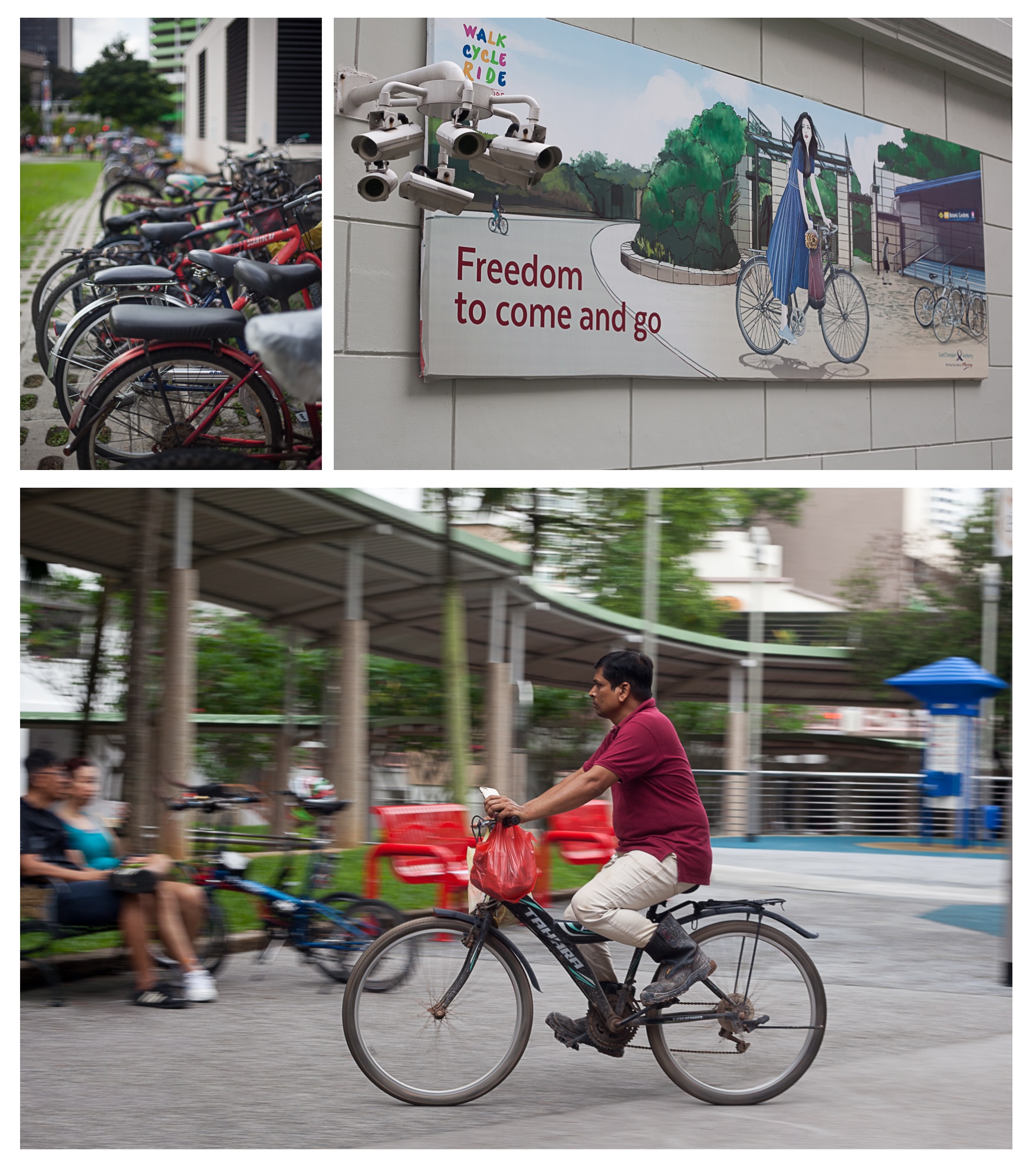

So, that’s a quick look at bike use in Singapore. Compared to the crowded and expansive rail network the cycling numbers are still tiny – but keep in mind that the city didn’t even have a rail network until 1987, and look at it now after 3 decades of investment! I’m looking forward to seeing whether bikes will enjoy the same miraculous transformation over the next 30 years.
–words and photos by Richard Ashurst




